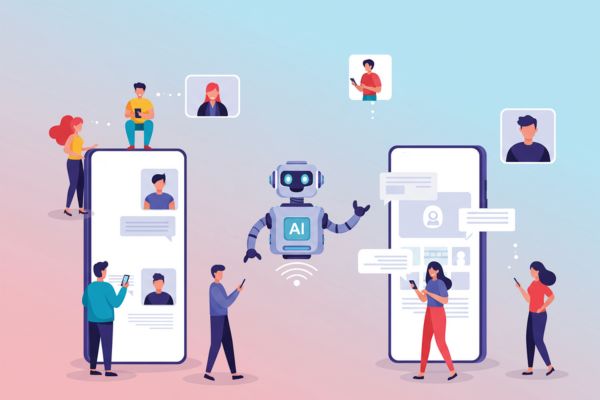Okay, let’s be real for a second. Have you ever talked to your phone and had it actually understand what you meant? Not just recognize the words you said—but get the meaning behind them? That’s not magic. That’s Natural Language Processing (NLP) doing its thing.
Now, unless you’re knee-deep in the tech world, you probably don’t think about Natural Language Processing applications too often. But here’s the kicker—you use it every single day, probably without realizing it. From the way Google autocompletes your search to how chatbots help you return an item online, NLP is everywhere.
Let’s dig into what Natural Language Processing applications are all about, why they matter, and how they’re quietly reshaping everything from your inbox to your doctor’s office.
So, What Is Natural Language Processing, Anyway?
Before we jump into all the cool stuff it can do, let’s break it down.
Natural Language Processing is a branch of artificial intelligence that focuses on the interaction between computers and human language. Basically, it helps machines understand, interpret, and respond to the words we say or type in a way that makes sense.
It’s like teaching a robot to not only read but also comprehend what it’s reading—nuance, sarcasm, context, and all. Sounds wild, right? That’s because it kinda is.
Virtual Assistants That Don’t Suck
Remember the early days of voice assistants? You’d ask a question, and the response was… let’s just say, disappointing. Fast forward to now, and tools like Siri, Alexa, and Google Assistant are pretty solid. They understand your tone, catch when you’re mumbling, and sometimes even throw a joke back at you.
These are Natural Language Processing applications in full swing.
They use NLP to parse your speech, understand the intent, and figure out the best way to respond. And the more you talk to them, the smarter they get. It’s like your assistant’s learning on the job—except they don’t take coffee breaks.
The Secret Sauce Behind Your Search Engine
Let’s talk about Google for a sec. You type in “best brunch spots near me,” and boom—up comes a list that somehow gets exactly what you’re looking for. No spelling correction needed, no awkward phrasing judged.
That’s because search engines now use NLP to understand not just the words but the meaning behind your queries.
Natural Language Processing applications power the algorithms that make search engines feel intuitive. They can handle slang, context, and even incomplete sentences. You don’t have to be a grammar nerd to get results anymore—thank goodness.
Chatbots That Actually Help
Raise your hand if you’ve ever rage-quit a customer service chat because the bot was useless. Yep, we’ve all been there. But things are getting better—much better—thanks to NLP.
Today’s chatbots aren’t just pre-programmed scripts. They’re smarter, more responsive, and way better at having conversations that actually feel human.
Whether you’re rebooking a flight, asking for a refund, or tracking a package, these bots use Natural Language Processing to understand your issue and guide you to a solution—without sounding like a broken record.
Translating the World, One Sentence at a Time
Language barriers? Not such a big deal anymore.
With tools like Google Translate, NLP has made it easier than ever to communicate across languages. And while early versions were, well… laughably inaccurate, modern translation tools are surprisingly decent. They don’t just translate word-for-word—they catch idioms, tone, and even cultural context.
This isn’t just handy for travelers. Businesses, global teams, and even humanitarian efforts rely on NLP-powered translation to keep communication flowing.
Emails That Practically Write Themselves
Ever start writing an email and get that spooky little suggestion from Gmail? Yeah, that’s NLP too.
Smart Compose, auto-corrections, grammar suggestions—they’re all Natural Language Processing applications designed to make your life easier. They learn how you write and nudge you toward faster, more polished messages. No more sweating over the perfect closing line or wondering if “Best regards” sounds too stiff.
It’s like having a low-key writing assistant built right into your inbox.
Doctors, Lawyers, and… Algorithms?
Believe it or not, NLP is also making moves in healthcare and law.
In hospitals, NLP helps extract key details from doctor’s notes and medical records. Instead of sifting through pages of handwritten notes, systems can highlight symptoms, suggest diagnoses, and even catch medication errors.
In legal work, firms are using NLP to scan massive document collections and pull out the important stuff—saving hours, even days, of boring grunt work.
It’s not replacing doctors or lawyers, but it’s giving them powerful tools to make smarter decisions, faster.
Keeping the Internet a Little Less Toxic
Let’s be honest—the internet can get nasty. But NLP is helping fight the good fight.
Content moderation tools now use Natural Language Processing to detect hate speech, cyberbullying, and inappropriate content in real time. It’s not perfect, but it’s improving constantly—and it’s a huge help for platforms trying to keep their communities safe.
Imagine trying to manually review millions of comments a day. Yeah, no thanks.
Teaching Machines to Read Between the Lines
One of the coolest (and creepiest) NLP applications? Sentiment analysis.
It’s the tech behind systems that can read reviews, tweets, or even news articles and figure out the emotional tone. Is the writer happy, angry, sarcastic, or just plain meh?
Marketers use it to understand customer feedback. Companies monitor social media to track public opinion. Even politicians (yep) use it to gauge how people feel about their latest campaign promises.
Natural Language Processing applications here go beyond the words and into the vibes.
The Future Is Talking Back
Here’s the wild part: we’re still only scratching the surface of what NLP can do.
As models get more advanced and training data grows, we’ll see even deeper, more intuitive ways for machines to understand us. Think real-time translators in your earbuds. Therapy bots that actually listen. Entire articles written in your voice from a five-word prompt (hey, not too close to home…).
But here’s the thing—NLP isn’t here to replace humans. It’s here to help us communicate better, faster, and with fewer headaches. At its best, it’s invisible. Seamless. Helpful.
Final Thoughts: Natural Language Processing Applications Are Already Part of Your Life
So yeah, Natural Language Processing applications aren’t some futuristic fantasy. They’re already baked into your day—from your morning Google search to your late-night texts with a chatbot. And the more they evolve, the more natural it’ll feel to talk to tech like you talk to a friend.
Whether you’re whispering to your phone or asking your smart speaker to play your favorite song, just remember: NLP’s got your back. And it’s only getting better.
Welcome to the age of machines that actually understand what you mean. Feels kinda nice, doesn’t it?







